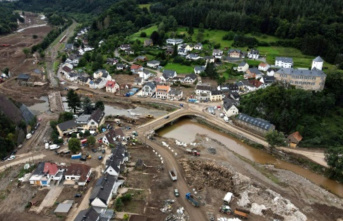The Phalanx was born out of necessity. It was hardly possible otherwise, because the deeply staggered formation achieved its effect as a collective. A caste of wealthy elite warriors would always have refused to fit into the crowd. When Philip II in 359 BC. BC ascended the Macedonian throne, the country was quite run down. The people were impoverished, poorly equipped and poorly educated. Becoming an excellent swordsman required a lifetime of training. So he came up with another idea. He outfitted his soldiers in light armor and gave them a spear four to six meters long, the sarissa. For a proud nobleman, the Larissa was an unthinkable weapon, because for the lone fighter it was completely worthless. In hand-to-hand combat, the opponent can bypass the unwieldy long spear and then freely attack the wielder, who also only carried a small shield. Larissa worked in the crowd. When several rows lowered the spit and then tip after tip protruded forward like a steel hedgehog.
The length of the spears meant that opponents could not reach the Macedonians with their swords. If the Larissa was propped up with the blunt end in the ground, she could withstand an attack by horsemen and even chariots. Operating them effectively required strength and the ability to follow the movements of the formation with iron discipline.
Similar to the Roman tortoise, the phalanx was a compact formation staggered 16 limbs deep. Due to the length of the pikes, an opponent was faced with five points. This covered only a small front width with your troops, but at this width the phalanx worked like a hammer. Once in motion, the formation was unstoppable as the rear ranks literally pushed the front men forward. If all went well, this formation would break the enemy line in several places. With the breaking of the line, the battle was decided in those days.
The shortcoming of the formation was its sluggishness, but Philipp compensated for this with constant drills. His soldiers were able to quickly change the direction and depth of the formation in battle. This made it difficult to attack the phalanx at its weak points, the sides and rear. They could march longer and faster than others.
With the Macedonian phalanx, Philip's son and successor Alexander inherited the strongest and most disciplined infantry of the time. He perfected their use of "hammer and anvil" tactics. Part of his army, in phalanx form, attacked the opponent, but did not try to throw him out of position, only engaged him in battles. This "anvil" bound the opposing troops, who could no longer move freely. Then Alexander himself leads his elite force of hetairoi (companions) against a weak section of the enemy. The Hetairoi fought as shock cavalry on horseback. Alexander is said to have loved his charger Bucephalus as a friend, and Bucephalus accompanied him in all battles until his death.
The riders pushed through the front, which the enemy could no longer reinforce. Then the Hetairoi turned against the rest of the enemy soldiers, who were now also being pressed more strongly by Alexander's other troops. The hammer struck, the enemy was caught between him and the anvil. Alexander's great victories did not lead to a weakening of the enemy, but to the extensive destruction of his army.
Discipline of the Macedonians was crucial, as was the fact that the enemy's troops were less drilled into movements in their formations. As soon as an opponent was able to move more quickly in a coordinated manner on the battlefield due to a flatter position, the phalanx was bound to have problems. Their short front width necessarily led to a short line. The era of the phalanx ended when the Macedonians met the Romans. The legionnaires were just as disciplined and trained as the Macedonian foot soldiers. But their generals could move small groups of soldiers - maniples and cohorts - around the battlefield with precision, and the phalanx was outmaneuvered.











